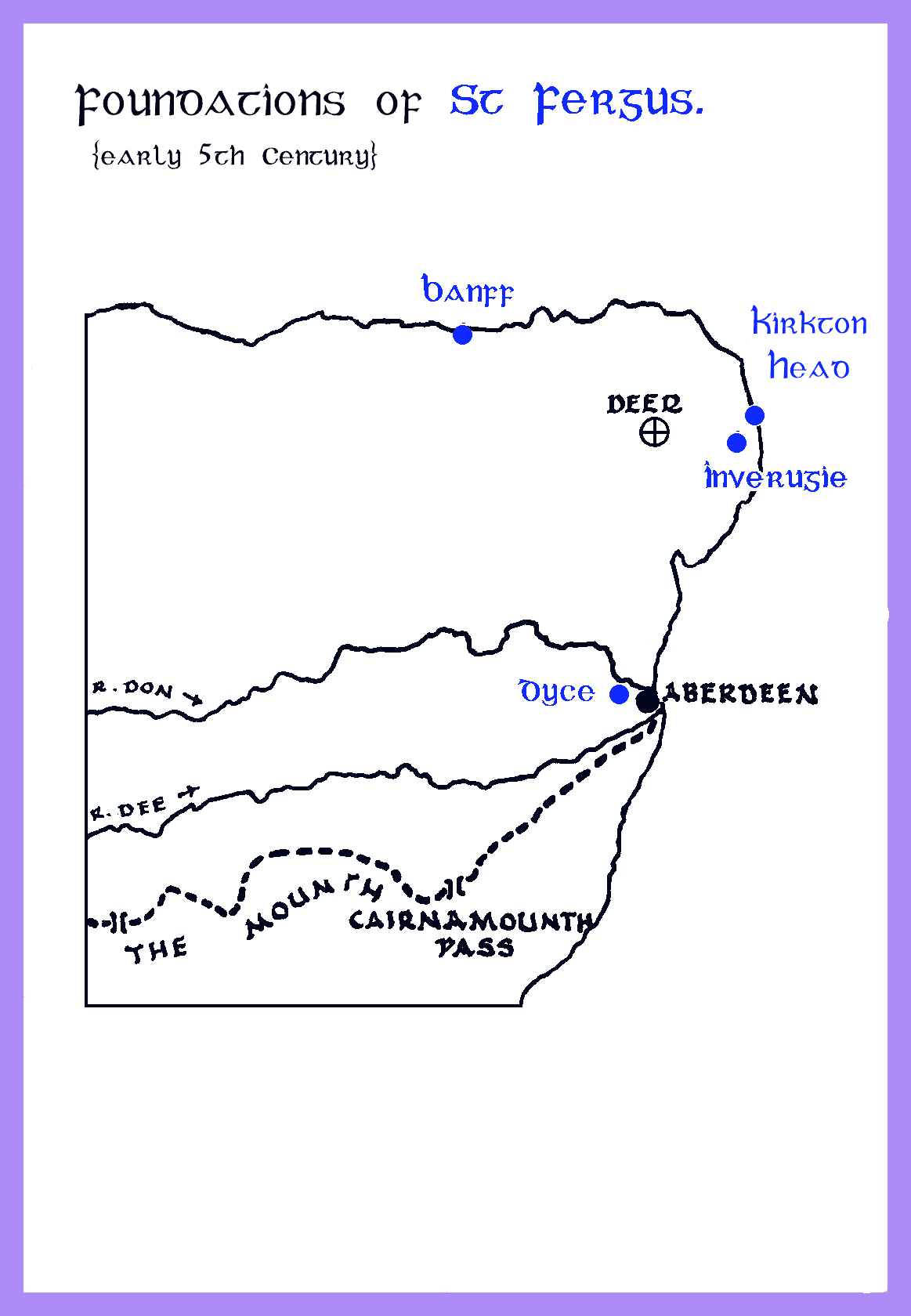Main Content
St Fergus the Pict
St Fergus was a companion of the great master St Drostán, along with St Colm and St Medan. He was active both in the area of Buchan (near to Drostán's foundation at Deer) and in the province of the Pictish tribe of the Ce (now known as Caithness). He is said to have been a Pict by birth and is sometimes known as "St Fergus the Pict". His foundations are not numerous but they are important. Indeed, parts of the land near the coastline are still named after him, including St Fergus' Moss and the village of St Fergus itself with its little church, near Kirkton Head, which was founded by the great man himself. Many of today's oil-workers have links with the terminal at St Fergus but how many, I wonder, know of the village's ancient link with Drostán's friend. The churches at Inverugy and Banff (see picture to the right) may have been his foundations also.
St Fergus was also patron saint of Wick in the northern reaches of Caithness. His church there is believed to have stood, in pre-Reformation times, near the east end of the town, at a place called Mount Halie. A stone image of him existed in the burgh till 1613, but was then destroyed by the Rev Dr Richard Merchiston of Bower, who was noted for his zeal in abolishing "Popish" survivals. It is said that the local people were so enraged at the iconoclasm of the minister that they drowned him in the river of Wick as he was on his way home! The report went abroad that St Fergus himself did the drowning, and was seen astride of the minister holding him down in the water! A local fair held on the 24th November was from ancient times known as Fergusmas.
Returning to the north-east, St Fergus does not appear to have had an altar dedicated to him in the 'mother' cathedral at Aberdeen but, in an inventory of valuables from 1464, reference is made to a silver-plated reliquary in the form of an arm, described as brachium argenteum Sancti Fergusii cum ossibus ejusdem, i.e. the silver arm of St Fergus with the bones of the same. The parish church of Dyce, near Aberdeen, was dedicated to St Fergus who is said to have founded the original church there. Indeed this parish was at one time known as the Chapel of St Fergus near Moss-Foetach.

Above: Foundations ascribed to St Fergus.
small(transp).png)
